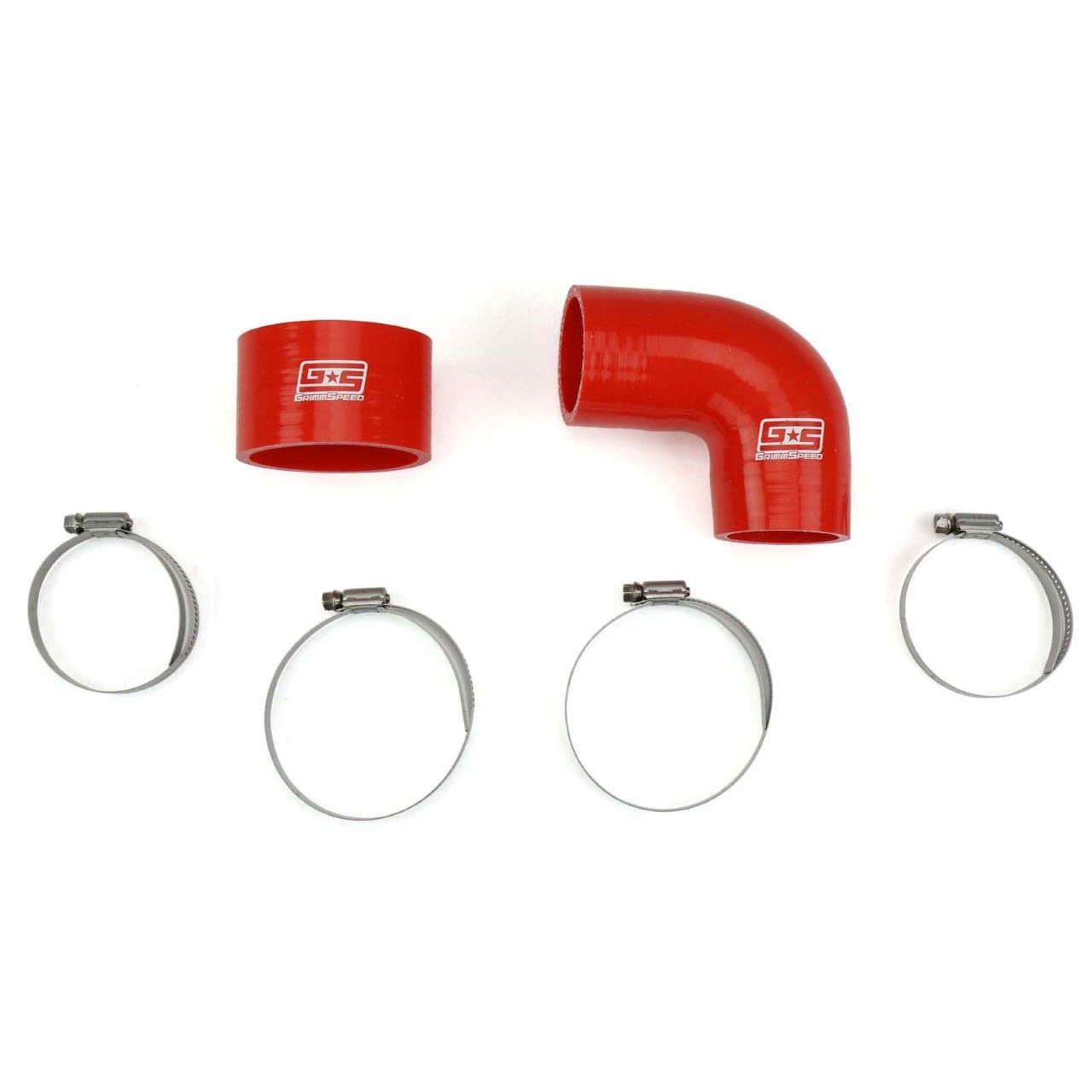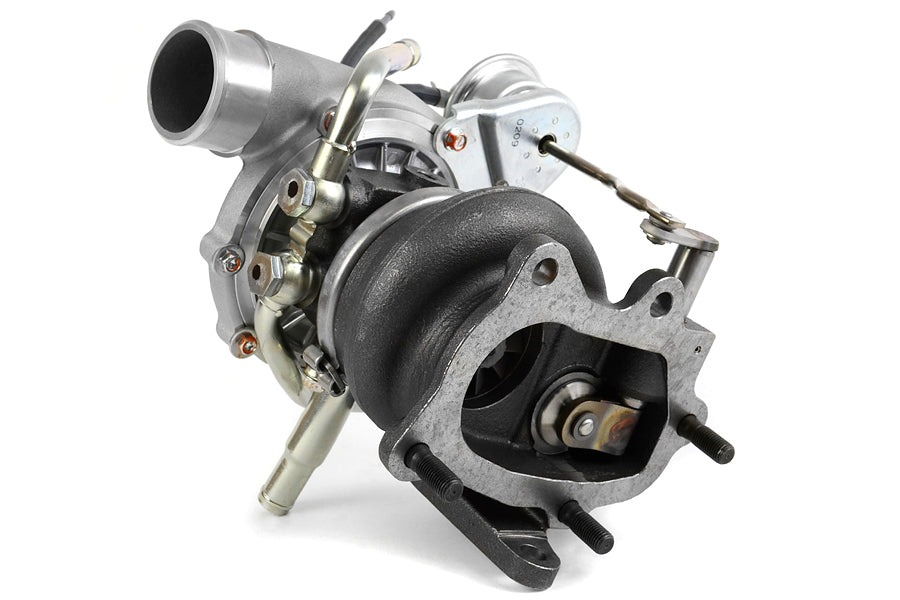TECHNICAL: How To Check For Boost Leaks
3 APR 2025 - Jeff Willis
In this article we will talk about the importance of boost leak testing, and how leaks can rob your turbocharged Subaru or any turbocharged vehicle for that matter of performance, and it can cause premature wear on your turbocharger. Your turbocharger needs to be free of any vacuum or boost leaks so that you can hit your target boost levels every time, so that you can make the most efficient use of power each time you’re on the throttle. What had inspired this topic is that even though the author has 29 years of wrenching and experience with turbocharged vehicles from classic Porsche 930 models to million horsepower Supras, he is also a big dummy who overlooked something so stupid that it cost him dyno time, time with the tuner, and nearly blew up a brand-new $4k+ turbo over an overlooked intercooler coupler. But the experience highlighted the importance of how your turbocharger needs to have a sealed system to make peak performance, and how easy it can be to overlook everything especially when modding your engine.
YOUR TURBO PUSHES A TON OF AIR
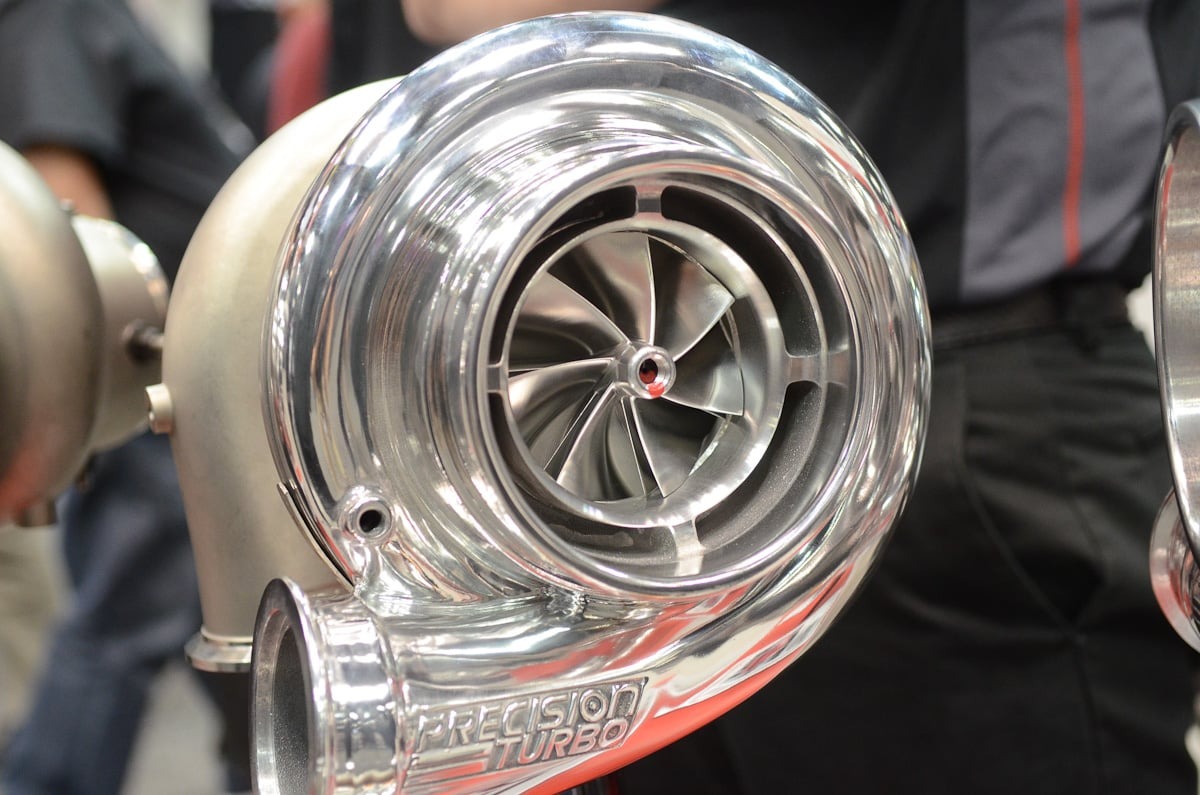
The shiny park of this turbocharger is called the compressor cover. And the turbine wheel is the compressor wheel that sucks in the air forcing the air to the intake side. The compressor cover pushes air into your intercooler pipes, or in Subaru’s case with a top-mount intercooler, it compresses (or forces) air directly into the intercooler. This is also known as forced induction, because you are forcing air into the intake manifold via turbocharger, or supercharger. Your compressor cover connects to a lower intercooler pipe that connects to one end-tank of your intercooler core, where the intercooler’s job is to lower the intake charge temperatures just before exiting the other end tank of the intercooler where the other end of the intercooler pipes connect to your throttle body. When your throttle body is fully opened, you are making full boost so you will have the highest volume of air being forced into your intake manifold. For those of you who have experienced a blown intercooler pipe, this happens because either the clamps are too loose, you’re not using T-bolt clamps, or if your intercooler pipe doesn’t have a proper bead welded onto the end allowing the pipe to slip off the coupler during boost. When this happens, there is a major loss of power, your car will not get into boost, and depending on what you drive, your car will struggle to run and remain in limp mode.
THE BIGGEST RISK WITH BOOST LEAKS
What boost leaks will affect the most, will be your turbocharger. Whether if you have a STI with the OEM IHI VF48 turbocharger, or even in a worse case if you have a dedicated drag car with a giant Precision Pro Mod turbo pictured above that is $4k+ running 40+lbs of boost, bigger turbos suffer the most. The problem with boost leaks is that they will over spin your turbocharger. Over spoinning the turbocharger puts major stress on the bearings of your turbo. When your ECU, your MAP sensor, or your boost control solenoid fails to see that your turbocharger is not hitting those target numbers, the solenoid will increase boost to make your turbo spin harder to hit those numbers. Losing a turbocharger is very expensive whether if you have an OEM replacement or an aftermarket upgrade, and it can be labor-intensive especially if you’re paying a mechanic to do the job. This is why it is important to check for boost leaks. Before we can show you how to perform a boost leak, lets highlight some of the areas where boost will leak.
Before performing a boost leak test, here are common areas for you to inspect:
SEPARATED INTERCOOLER COUPLERS
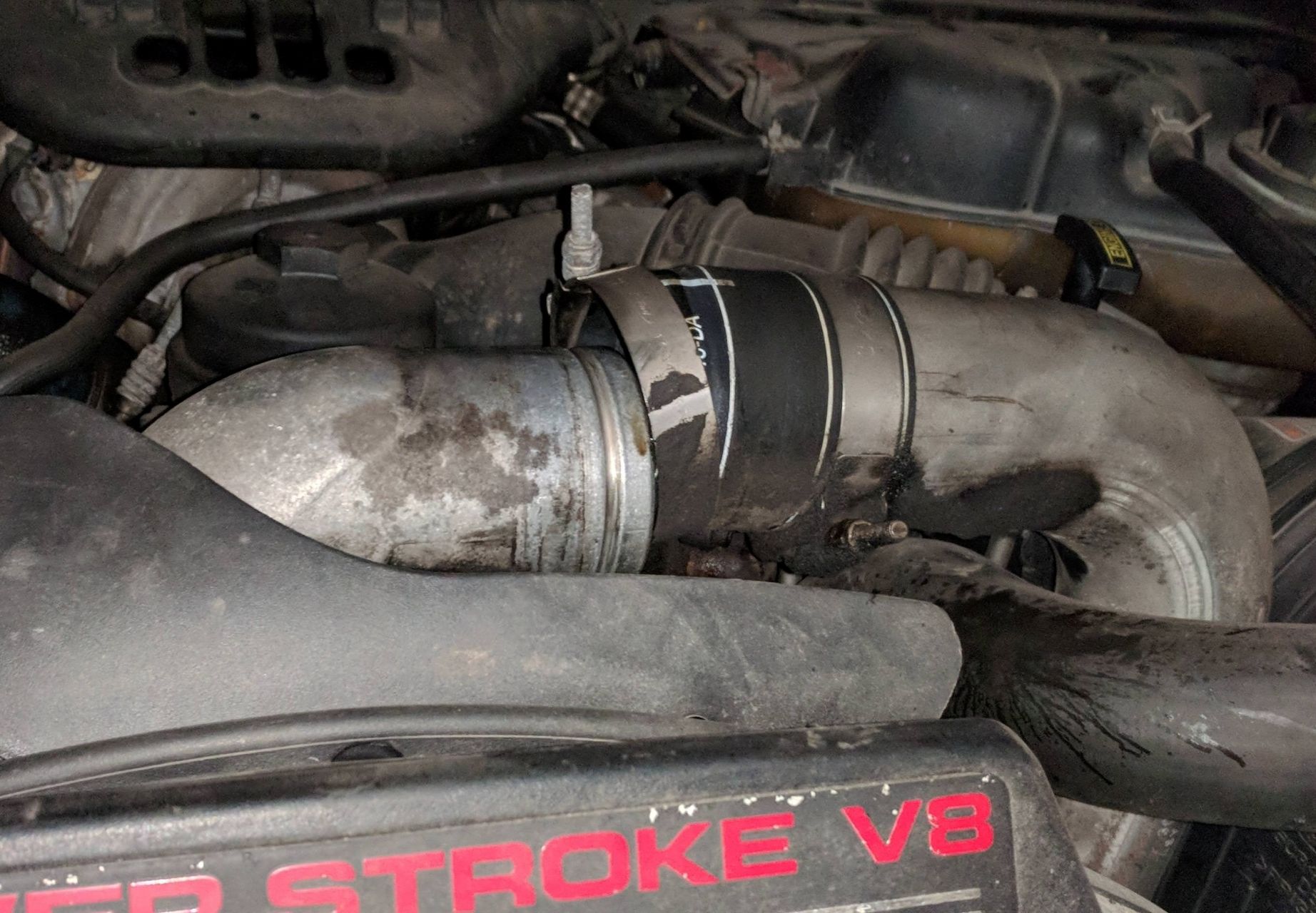
For Subaru models with top-mount intercoolers, you will just have to inspect the coupler connecting the throttle body and it is nearly impossible to blow off this coupler especially if the mounting points are properly bolted down. However, this coupler is not immune from leaks which we will discuss here momentarily. This is more for front mount intercooler setups, or other vehicles that have factory side mount intercoolers where there are routed intercooler pipes such as a classic DSM (early 90’s Mitsubishi Eclipse, Plymouth Laser, Eagle Talon), or other vehicles such as the Toyota Supra Turbo, Mitsubishi 3000GT VR4, etc. A separated intercooler coupler would behave the same way as a blown intercooler hose because you will be essentially leaking all the boost into the atmosphere and will not be making any more boost. For those of you with aftermarket front mount intercooler setups, or who have a vehicle with a factory side mount setup, it is also a great idea to remove the pipes every once in a while, and clean the oil out of them due to an old turbo, or a bad PCV system where oil can get in the pipes. Get a couple of cans of brake parts cleaner, and spray your intercooler pipes free of oil, and make sure that you have a clean connection with your couplers and your pipes.
REPLACE YOUR TRADITIONAL WORM CLAMPS WITH T-BOLT CLAMPS
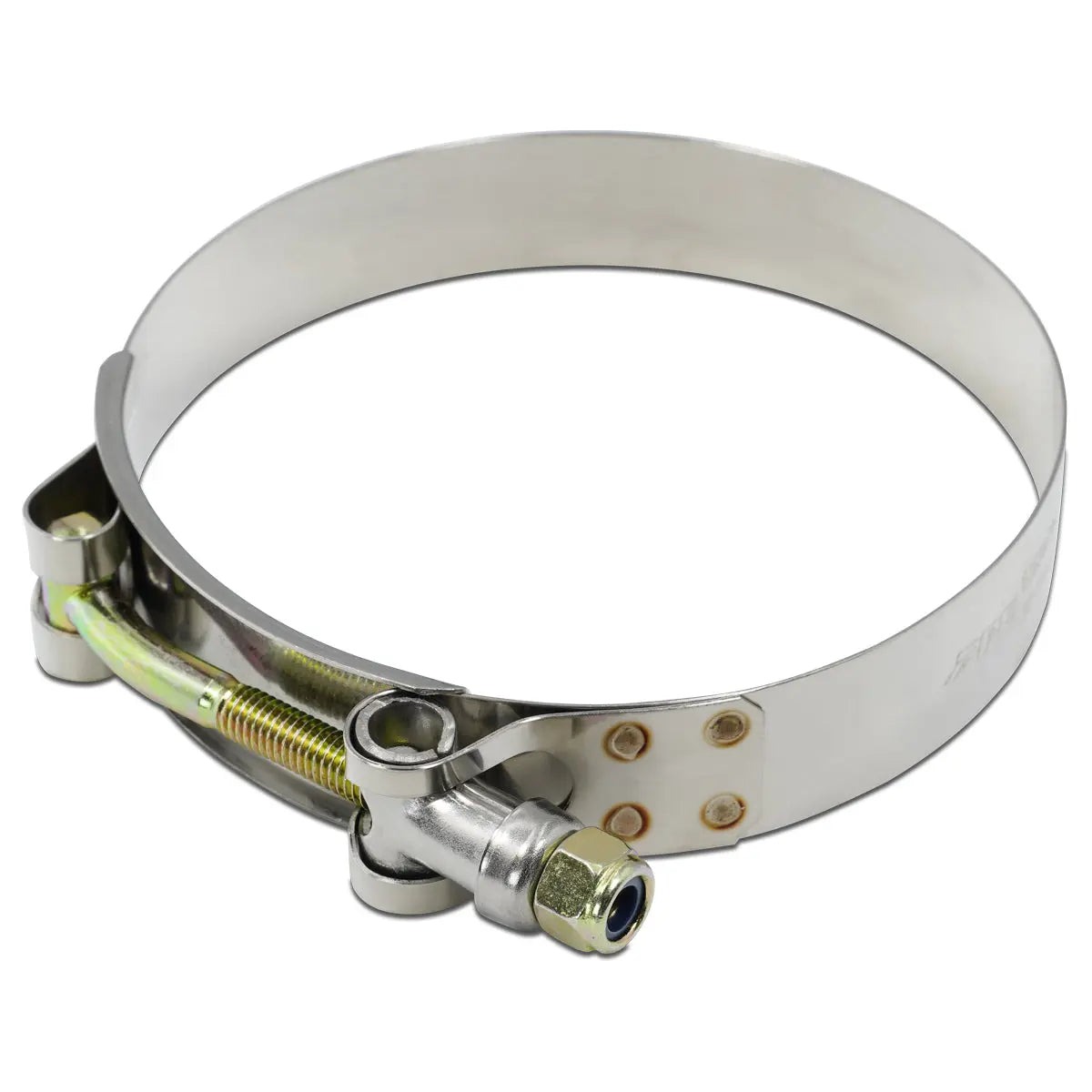
Traditional worm clamps are the common clamps that you can adjust with an 8mm socket or a flathead screwdriver, and you can only tighten these so much before the adjuster screw fails to tighten further. Now this is only a problem for those of you who are making 500+hp and above, but these won’t be strong enough to hold down 2.5” and above intercooler pipes. Can they secure an intercooler coupler with a good bead on the end? They sure can, but they can also leak boost. This is why it is always recommended that you replace traditional worm clamps with T-bolt clamps on intercooler pipes where you can. You don’t need T-bolt clamps to hold in your intake pipe to your turbo that’s overkill, but on intercooler couplers absolutely because worm clamps can and will back themselves loose if they are subjected to too much pressure along with typical road vibration.
REPLACE OLD INTERCOOLER COUPLERS
Click Here for All Intercooler Hose Kits
For older Subaru models, the OEM throttle body coupler will need to be replaced. It is made of standard rubber materials used throughout the engine bay, and it endures countless heat cycles. Over years and miles, the OEM throttle body coupler gets hard, oil soaked, and it can corrode, dry-crack, or can tear at the clamps, causing a major boost leak. Because of these reasons, many established companies such as the example from GrimmSpeed above, have developed multi-layer silicone units that won’t expand under pressure, and it will have better heat tolerances. Upgraded throttle body hoses are mandatory for turbocharged Subaru models, but for other applications, many will resort to using couplers found at the plumbing isle at our local Home Depot stores, or inferior couplers sold at local auto parts stores. Get yourself some silicone units and secure them with T-bolt clamps to reduce the chances of any boost leaks.
CHECK ALL OF YOUR VACUUM LINES AND HOSE CONNECTIONS COMING OFF YOUR INTAKE MANIFOLD
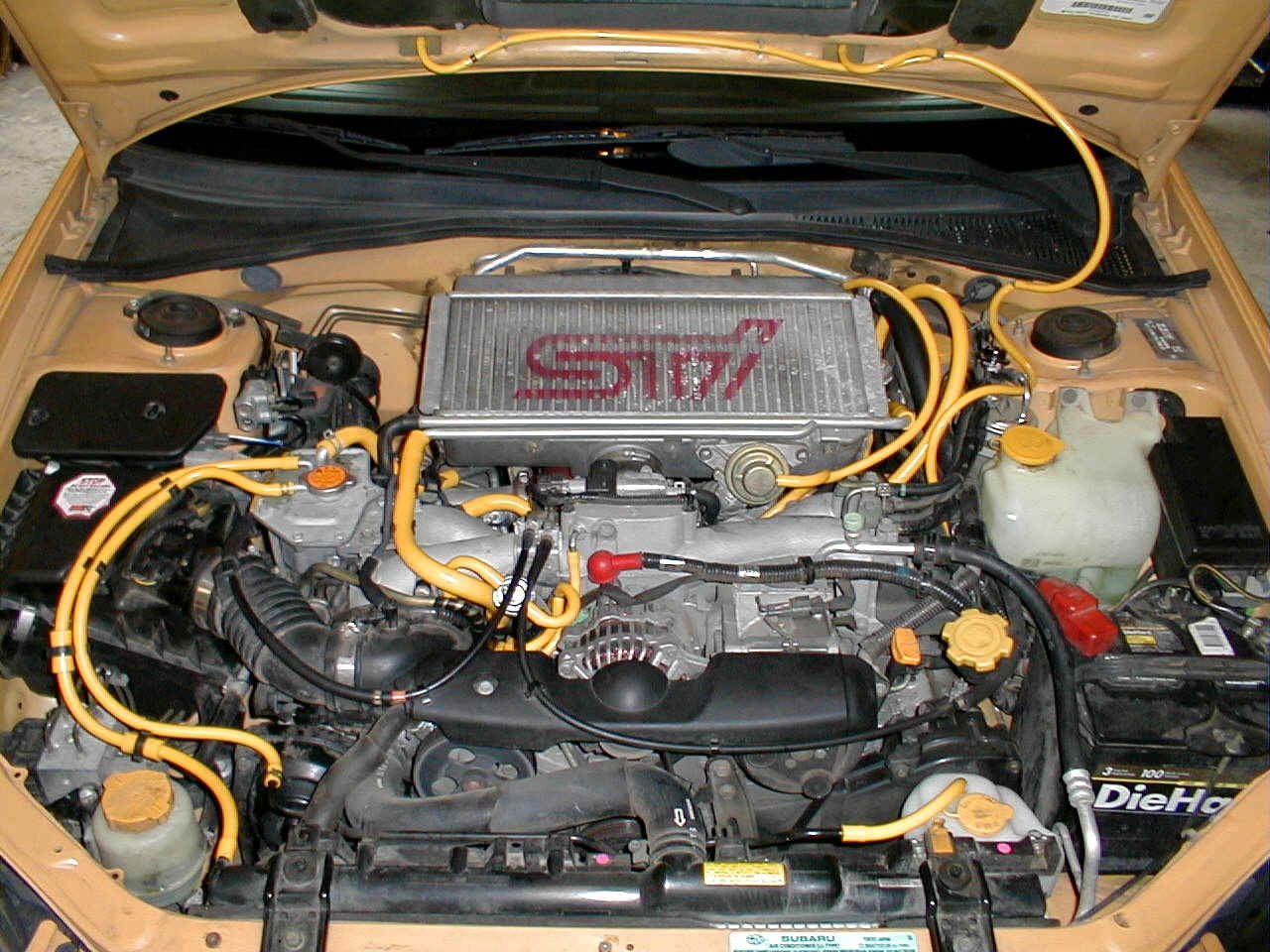
One of the most overlooked areas in terms of boost leaks is your vacuum lines. Your lines that run from your boost control solenoid, the compressor housing on your turbo, the line coming off your wastegate, your blow-off valve, all need to be properly secured with a clamp or zip-tie. Just because the hose fits snugly on the nipple of the intake manifold or any of the mentioned components, does NOT mean that it’s secure. It doesn’t mean that it will blow-off during boost either. But what many fail to consider is that all of these little micro-leaks add up, and can cause idling issues, issues with your tune in terms of air/fuel ratios because your ECU will be fighting to compensate values, and you can lose a few psi of boost. Take the time to check every single hose that connects back to your intake manifold, and make sure that each hose is not leaking with any holes because vacuum hoses can get dry and crack/tear as well. Any vacuum hoses subjected to heat like your wastegate hose can get burned and cause a leak.
LEAKING BOOST AT THE OEM BLOW-OFF VALVE OR AT THE WASTEGATE
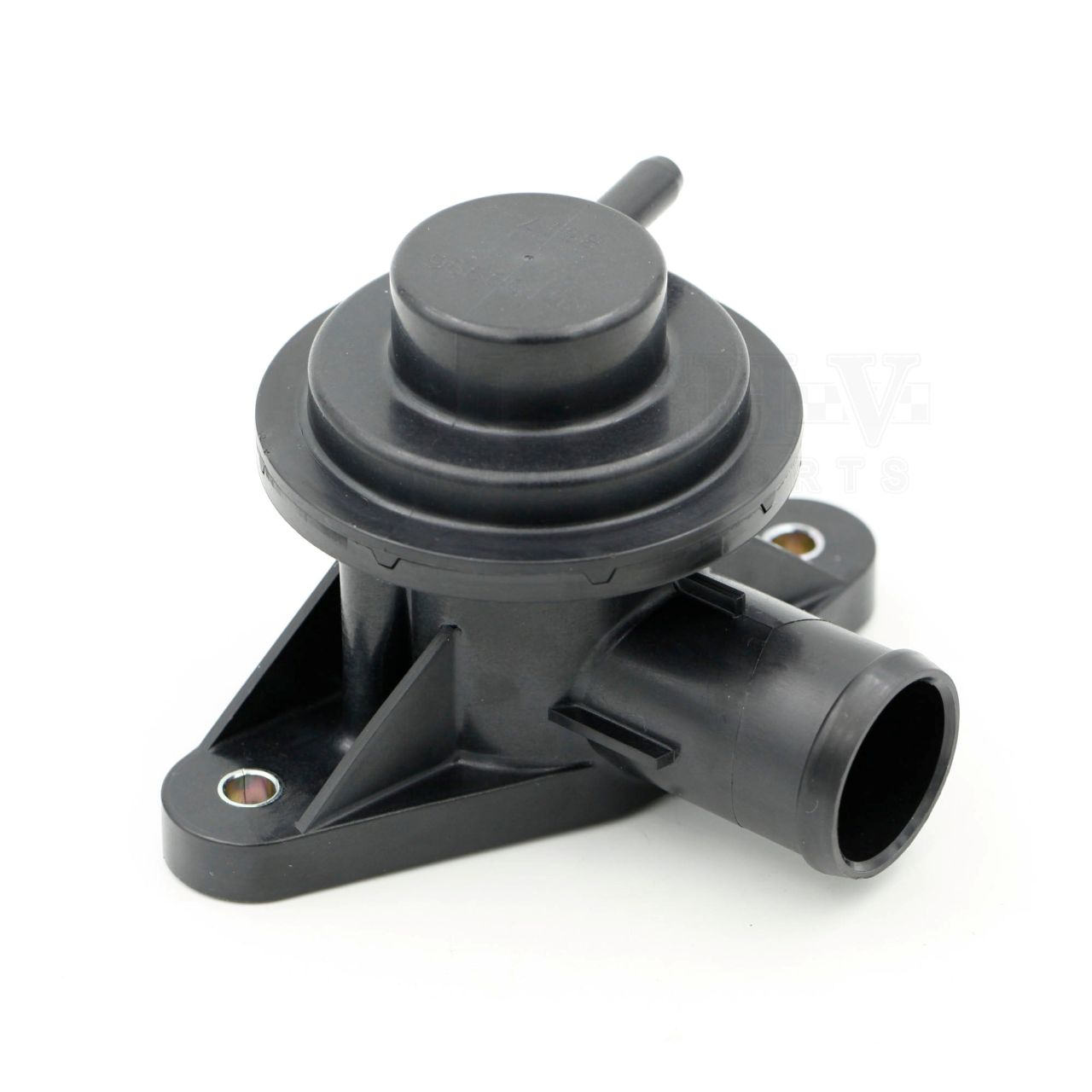
For Subaru models, the OEM blow-off valve is sealed using a paper-like gasket. It is a good idea to replace this gasket if it hasn’t been replaced in some time. And for those of you who have opted to get a new aftermarket blow-off that installs in the OEM flange, they will typically include a new gasket.
Now regarding leaky blow-off valves this can be tricky. As you increase more horsepower, you are making more boost. Which means your turbo will be moving more air. The problem is that the internal spring may not be strong enough to create a proper seal during full throttle, allowing boost to leak, and there isn’t a real way of pinpointing the issue in terms of a conventional boost leak test. You can usually tell if your turbocharger is making surging noises, or if you are not holding peak boost and have a good drop off after hitting peak boost. At that point, you either have a weak spring in your blow-off valve, OR, you have a leaky wastegate diaphragm. Now this is more of an issue with external wastegates because of the heat that they experience. The internal bladder or diaphragm is made of rubber, and it can tear during boost. Internal wastegates can leak boost because of a weak internal spring, or the arm that attaches to the internal flapper inside the exhaust housing is not opening or shutting properly because there could be rust or debris prohibiting the function.
2015-2021 Subaru STI IHI VF48 Turbocharger
Now these two components should be the last to rule out if you have performed a boost leak test and can confirm that you are not leaking boost from the intake manifold side of things. So, no leaks from the compressor housing of your turbo, no leaks from the intercooler couplers, and all vacuum lines are checked out. If you are still leaking boost and are noticing a major drop in boost, then your blow-off valve and wastegate need to be investigated.
Click Here for All Blow-Off Valves
OKAY, HOW DO YOU PERFORM A BOOST LEAK TEST?
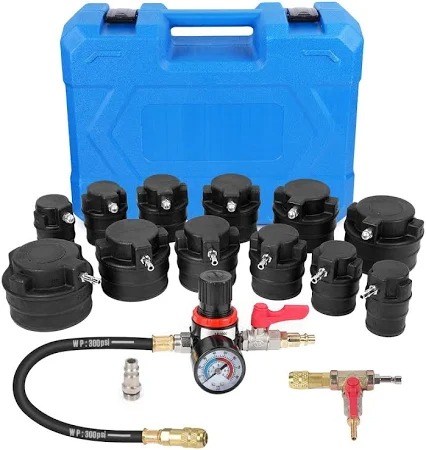
Now performing a boost leak test is not the easiest of tasks, but if you want your Subaru or other turbocharged vehicle to run at 100% efficiency, you need to make sure that everything is properly secured and sealed off internally so that you can get the most out of your turbocharger.
But the main method of performing a boost leak test is compressing air into the compressor housing of your turbocharger. So most importantly, you need to have the right tools. Otherwise, any competent shop can perform this procedure if you don’t have an air compressor. With that being said, you’ll need an air compressor above anything else.
You can get a boost leak tester from any of your favorite online shops. The key is to get the right size. So, if your turbocharger has a 3” inlet on the compressor side, you will need to get a 3” boost leak tester. Now there are countless how-to videos on Youtube on how to perform a boost leak test. For example:
You will be using your proper attachment to the compressor side of the turbo, and then with your air compressor, you will be forcing air into your turbo through the vacuum line that attaches to the compressor housing.
It is a great idea to have a bottle of soapy water so fill it with water and lots of dish soap. Spray water on your intercooler couplers and vacuum lines, and all over your intake, then compress air. You can listen, and if there is too much noise going on, look for bubbles. If you have bubbles, you have a boost leak.
On Subarus, it is also very possible that you could be leaking boost through old TGV gaskets. So, if you are, get new gaskets to fix that problem.
Now there are also countless videos on YouTube on how to make your own boost leak tester, but if you are also on a budget, you can get really strong plastic such as a few folded zip-lock bags, properly clamp them over your compressor housing while compressing air into your turbo. Not the best method, but it does work.
You can also purchase a smoke machine, but we don’t really dwell into that method due to the overall complexity of smoke testers. Now they do work, but if you’re not doing it right, you’ll have a garage full of smoke that can cloud your judgement (see what we dun there?) as opposed to feeling, hearing, and looking for bubbles in the traditional method.
NO BOOST LEAKS = A HAPPY TURBO
Once you have performed a successful boost leak test and can confirm that you are not leaking boost anywhere from your turbo to your intake manifold, go out and make sure that you are hitting your target boost numbers verified by your preferred boost gauge. Note that it is completely normal to have a drop in boost, and OEM boost levels are 14-16 psi, and obviously with mods such as an INTAKE, CAT-BACK EXHAUST, DOWNPIPE, and an ACCESSPORT, you’re going to see boost levels into the lower 20+psi range. But with no boost leaks, you are making peak power and efficiency from your turbocharger, and your engine.
